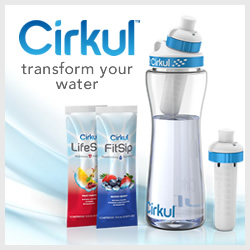 This hummus is super quick and easy, is cheaper to make and tastes far better than any pre-made store-bought hummus. Serve this hummus dip with plenty of raw vegetables, such as cucumber, carrots, celery and so on. You may use canned garbanzo beans (chickpeas) for the hummus if you wish, drain them but be sure to save 1/4 cup of the liquid. If you would like to cook your own beans instead, use 1 cup of dried garbanzo beans and soak overnight. Rinse, then cook them in plenty of water, with a little salt. Bring to a boil, cover and simmer for approximately 1 1/2 hours, or until very tender.
This hummus is super quick and easy, is cheaper to make and tastes far better than any pre-made store-bought hummus. Serve this hummus dip with plenty of raw vegetables, such as cucumber, carrots, celery and so on. You may use canned garbanzo beans (chickpeas) for the hummus if you wish, drain them but be sure to save 1/4 cup of the liquid. If you would like to cook your own beans instead, use 1 cup of dried garbanzo beans and soak overnight. Rinse, then cook them in plenty of water, with a little salt. Bring to a boil, cover and simmer for approximately 1 1/2 hours, or until very tender.
- 2½ cups cooked garbanzo beans (chickpeas), canned or homemade
- ¼ cup cooking liquid from homemade beans, or liquid from canned beans, or water
- 1½ Tablespoons extra-virgin olive oil
- ¼ cup lemon juice
- ¼ teaspoon garlic, minced (or more to taste)
- ½ teaspoon ground cumin
- 1 teaspoon sea salt
- ⅛ teaspoon ground cayenne (or more to taste)
- Place the cooked garbanzo beans in the container of a food processor, along with ¼ cup of the cooking liquid and process until mixture is slightly chunky.
- Add the rest of the ingredients and process until mixture is smooth and fluffy. Taste and if needed and extra lemon juice, garlic, salt, or cayenne to your liking.
- This dip tastes best at room temperature. If not serving right away, store in an air-tight container in the refrigerator for up to 1 week (remove from refrigerator 30 minutes before serving).
- Serve with raw vegetables for dipping. If you'd like to give the dip an extra special touch, when ready to serve drizzle the hummus with olive oil and sprinkle with a little paprika and/or parsley for garnish. This makes for a lovely presentation.


Hi, may i ask why not use a pressure cooker? I soak overnight but still like to pressure cook my legumes. I still haven’t come across any information that warns against using pressure cookers but for some reason i never read health conscious people using them. Thanks
Nasly, Thanks for the great question. Most health conscious people want to make their foods as “natural” as possible. With this thought process of “natural” one can now see a pressure cooker is not “natural”. Let’s take this one step more. A “natural first” thinker would question if a pressure cooker would harm the structure of the food. There is evidence that commercial pressure canning of fruit does change the fruit, so it is possible to happen with vegetables too.